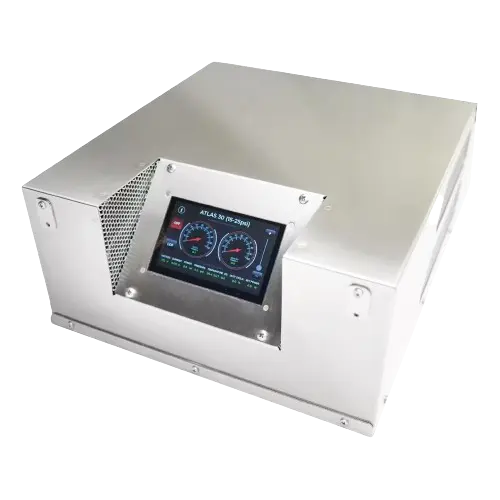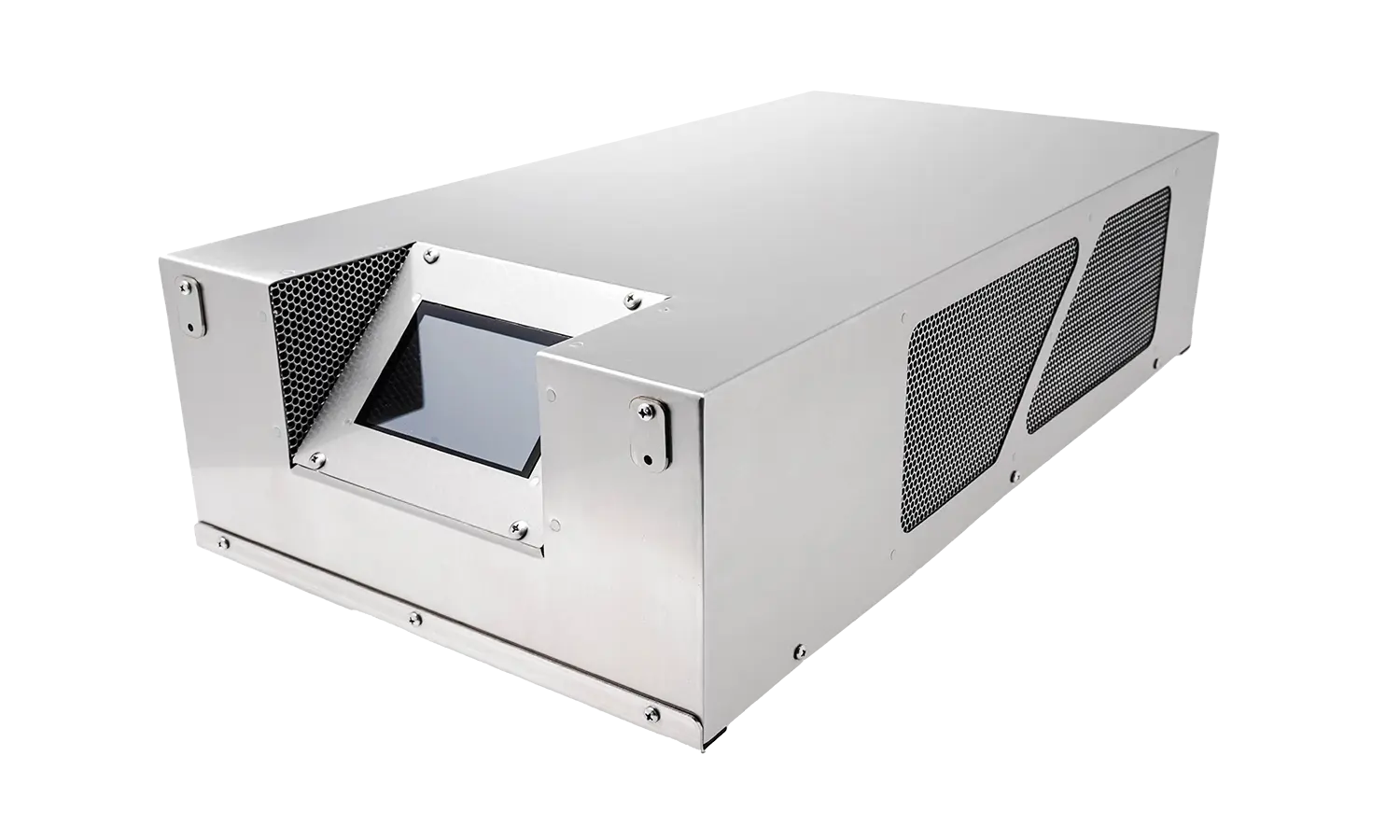Share This Story, Choose Your Platform!
Ozone water treatment FAQs
1. What is ozone water treatment, and how does it work?
Ozone water treatment purifies and disinfects water using ozone gas (O3) generated on-site using specialized ozone generators. Ozone consists of three oxygen atoms and acts as a powerful oxidizing agent. When Ozone is injected into the water, it reacts with contaminants through chemical oxidation. This reaction effectively neutralizes bacteria, viruses, organic compounds, pesticides, pharmaceuticals, and odours.
Compared to traditional methods like chlorine, ozone water treatment offers several advantages. It does not leave harmful residues in the water or affect its taste and odour. Ozone is highly effective in disinfection, efficiently killing various microorganisms, including bacteria, viruses, and parasites.
The use of ozone generators in water treatment is closely regulated and monitored to ensure safe and effective application. Proper ozone concentration, dosage, and contact time are crucial for optimal disinfection and water quality. Ozone water treatment systems are designed with robust ozone generators that efficiently generate and inject Ozone into the water supply, ensuring reliable and efficient treatment results.
2. What are the advantages of using Ozone generators for water treatment?
Ozone is a powerful disinfectant that effectively eliminates many microorganisms, including those resistant to chlorine. Unlike chlorine, Ozone does not create harmful disinfection byproducts, making it a safer option. Ozone decomposes quickly and naturally into oxygen, leaving no residual disinfectant in the water. It can also break down complex organic compounds, eliminating taste, odour, and chemical agents. Ozone reduces the need for chlorine, helping to minimize the formation of chlorinated disinfection byproducts. Furthermore, Ozone is environmentally friendly and does not accumulate harmful chemicals in water or the environment. Ozone systems can be easily integrated into existing water treatment processes and provide dosage flexibility, making them a versatile and beneficial option.
3. Is Ozone gas safe for drinking water treatment?
Ozone is a safe and effective way to treat drinking water, but it must be used properly. It is essential to follow the guidelines and regulations set by local health agencies and regulatory bodies to ensure safety. These regulations specify permissible ozone levels, byproduct limits, and other safety requirements to protect public health. One of the benefits of using Ozone is that it decomposes into pure oxygen without leaving any residual disinfectant in the water. However, ensuring all residual Ozone is effectively removed from the treated water before consumption is crucial. Different methods, such as off-gas tanks or activated carbon filters, can achieve this.
Additionally, while Ozone doesn’t create harmful disinfection byproducts like chlorine, it can react with organic compounds in water and create certain byproducts. Therefore, it’s essential to carefully monitor and control these byproducts to ensure the safety of drinking water. In conclusion, as long as regulations, guidelines, and best practices are adhered to, Ozone can be used safely to treat drinking water. Proper design, monitoring, and operation are essential to the disinfection process of water while effectively maintaining its safety for consumption.
4. How does Ozone compare to other water treatment methods like chlorine?
Water treatment can be done using Ozone generated by an ozone generator or chlorine, but they differ. Ozone is a powerful disinfectant that can quickly eliminate many microorganisms. Unlike chlorine, it does not produce harmful disinfection byproducts but can form other byproducts that need monitoring. Ozone naturally breaks down into oxygen without leaving any residual disinfectant. It is also an excellent oxidizing agent that can remove substances that cause taste, odour, and colour. On the other hand, chlorine is a potent disinfectant that can form disinfection byproducts that require regulation. It leaves a residual disinfectant in the water and may contribute to taste and odour issues.
5. Can Ozone remove bacteria and viruses from water?
Ozone is a highly efficient method for eliminating bacteria and viruses from water. Ozone is a potent oxidizing agent and disinfectant, which allows it to promptly neutralize a broad spectrum of microorganisms, such as bacteria and viruses.
Once Ozone is created by adding a third oxygen atom to the oxygen molecule, it is introduced into the water. It interacts with the cell walls of bacteria and viruses, harming their structures and disrupting their cellular functions. This oxidation process eventually results in the inactivation and destruction of these microorganisms.
Ozone’s exceptional disinfection abilities make it especially beneficial against various pathogens, including chlorine-resistant organisms. It can specifically target and eradicate harmful bacteria and viruses that may present health hazards in drinking water or other water sources.
6. What types of contaminants can Ozone effectively remove from water?
Water contaminants can be efficiently removed with the aid of Ozone. The following are some of the pollutants that Ozone can effectively eliminate:
Microorganisms: Ozone is highly effective in neutralizing and removing bacteria, viruses, fungi, and protozoa from water. Its ability to target and destroy microorganisms helps to reduce the risk of waterborne diseases.
Organic Compounds: Ozone is a potent oxidizing agent that can break down complex organic compounds found in water. It efficiently removes various organic contaminants, including pesticides, herbicides, pharmaceuticals, industrial chemicals, and natural organic matter.
Taste and Odour: Ozone can eliminate or reduce taste and odour issues in water caused by organic compounds such as geosmin and 2-methylisoborneol (MIB) that are commonly associated with earthy, musty, or algae-like tastes and odours.
Iron and Manganese: Ozone can help remove iron and manganese from water through oxidation. It converts dissolved ferrous iron and manganous manganese into insoluble forms, allowing for their subsequent removal by filtration.
Inorganic Compounds: Ozone also helps remove or transform certain inorganic compounds, including heavy metals and metalloids like arsenic and selenium.
7. Is Ozone effective in removing pesticides and pharmaceuticals from water?
Yes, Ozone is strong oxidizing that breaks down the chemical bonds in these compounds, resulting in their degradation and transformation into less harmful substances. By using ozone treatment, the concentration of contaminants in water sources can be significantly reduced. However, the success of this method depends on various factors, such as the amount of Ozone used, the duration of contact, water quality, and the specific compounds present. Monitoring and controlling the process carefully is vital to ensure that regulatory standards are met and the desired removal levels are achieved.
8. Are there any limitations or drawbacks to using ozone water treatment?
When it comes to using ozone water treatment, certain limitations and drawbacks should be considered. There are particular challenges related to using Ozone in water distribution systems. One of these challenges is the short half-life of Ozone, which can result in the absence of residual disinfectant in the system. Additionally, pre-filtration is necessary to decrease the organic load before ozone treatment. Nevertheless, these challenges can be mitigated through proper system design, operation, and monitoring, making using ozone technology in water treatment a valuable option for addressing specific water quality needs.
9. Can ozone water treatment be used for residential purposes, or is it mainly for industrial use?
Ozone water treatment can be used for both residential and industrial purposes. While ozone water treatment systems are commonly employed in industrial and municipal settings, they can also be used in residential applications. In residential settings, ozone water treatment can be used to disinfect well water, improve the taste and odour of tap water, remove common contaminants, and enhance overall water quality. It can be integrated into home filtration systems or water softeners or used as a standalone treatment method.
10. How is Ozone generated for water treatment, and what equipment is required?
The equipment required for ozone generation and water treatment typically includes:
- Ozone Generator: This is the primary equipment used to produce Ozone from oxygen atoms.
- Oxygen Source: Ozone generators require oxygen molecules for ozone production. An oxygen concentrator can provide this.
- Ozone Injection System: To treat the water, ozone must be injected. This is typically done using a venturi injector, which allows controlled Ozone mixing with the water.
- Ozone Monitoring and Control Equipment: Ozone levels in the water can be monitored and controlled to ensure proper disinfection and treatment. Monitoring equipment, such as ozone analyzers, sensors, and a control system, helps maintain optimal ozone dosing.
- Ancillary Equipment: Depending on the specific water treatment application, additional equipment may be required, such as water pumps, filtration systems, and contact tanks for adequate contact time between Ozone and water.





